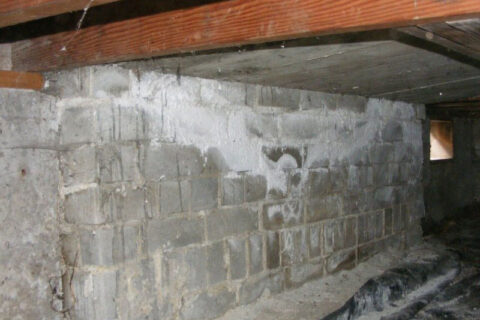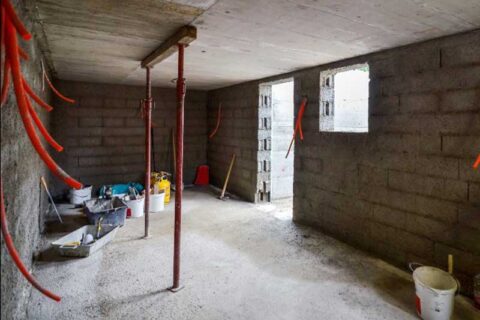Signs of Water
Signs of Water | Basement Waterproofing Milwaukee
How many homeowners are aware of the signs of water found on basement walls? What appears to be a small discoloration found on a forgotten wall in your basement may actually be the advancement of a serious issue that could lead to health risks, costly value loss in your home, and escalated energy consumption. Early detection could save thousands of dollars as well as a mountain of frustration.
Water on a basement floor is the end result of foundation flaws, yet this is typically what gets homeowners to move on a fix. “My basement is leaking! I need to do something now!” Well, yes, you do. However, was this the earliest point of detection? Seldom. Everdry Basement Waterproofing of Milwaukee notices many homeowners have seen an issue in the basement way before they ever consider getting it fixed, which is a major issue for the foundation.
The minor fracture found in the mortar joints of concrete block walls may not just be a simple “settling crack”. That may actually be the movement of the wall inward due to pressure from the earth’s clay on the exterior. These cracks on the interior are just the tip of the iceberg as far as damage is concerned. Popular Science tells us that there are 3 to 4 times as many cracks to be found on the exterior wall when one is found on the inside. These cracks on the exterior lead to water seepage into the hollows of the block. That moisture, hidden and unseen in the hollows may take a while to leak presentable water on the interior.
But what about that white powder crystalizing on the interior walls? So often brushed off or ignored, that efflorescence is actually the chemical reaction of water passing through concrete leaving a salt/lime substance behind. That deterioration of the cement over years can result in a costly need for replacement of a portion of the wall.
Mold found on a bathroom wall is met with a quick cleansing. After all, who wants to see, or worse yet, ingest mold spores? Often dismissed in the basement, those same mold spores pass through the home and spread the mold causing real health issues. That mold also doubles as a sign that water is locked in the wall, feeding its growth.
In fact, any discoloration can be an indication that something is amiss. Mold tests and moisture readings allow for a peace of mind with regards to one of your largest purchases: your home. But what if you can’t actually see the discoloration? What if the wall has been painted? The paint may give a false sense of security as it fixes the esthetics but does not fix the source of the moisture. Paint often bubbles or chips away from the wall when the concrete moistens. This too is an indication that there is a problem with the foundation’s protection.
These are just a few of the indicators of a much more significant issue. Professional inspections can prevent much of the more significant damage caused from this moisture. An ounce of prevention can save a pound of cure. Basement inspections may not solve the problem, but their diagnosis is the first step in attaining a dry, safe environment.
Ready to Get Started?
Contact Us Today to Schedule a No Pressure, No Obligation, Free Quote!


